This week, English Camp proudly hosted the Coast Salish Canoe Journey of 2017. I wrote about the Coast Salish before, when we provided the site for their Cultural Heritage Day. That was a mini-canoe journey with just one canoe: a trial run for this canoe journey.
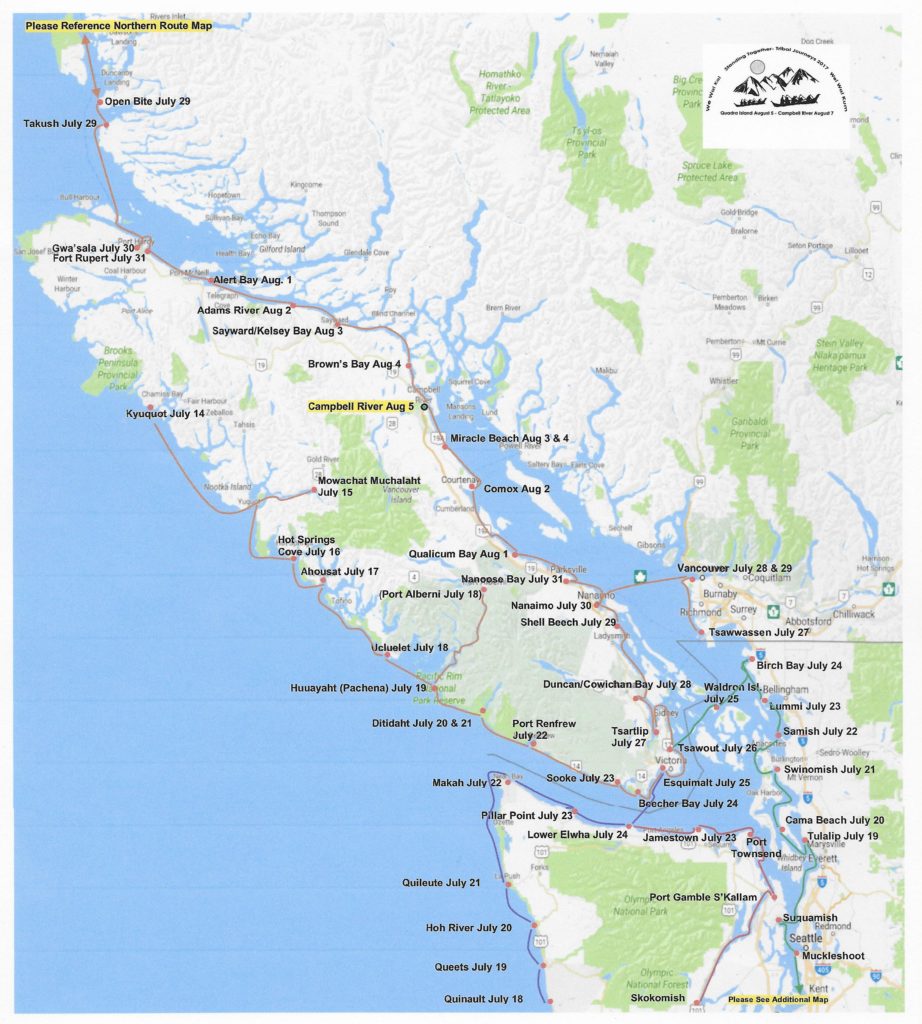 The Coast Salish are many different tribes, or families, that share common ancestors, language, and traditions. Today they are spread along the coastal areas of Washington State and British Columbia. Once a year they celebrate their common ties by participating in the Coast Salish Canoe Journey.
The Coast Salish are many different tribes, or families, that share common ancestors, language, and traditions. Today they are spread along the coastal areas of Washington State and British Columbia. Once a year they celebrate their common ties by participating in the Coast Salish Canoe Journey.
Each tribe, or family, sponsors a canoe – one of the large, wooden canoes that holds 10 people. These are the traditional vessels the Coast Salish used to navigate ocean waters, fish, hunt, and move from one area to another. For the most part, the coastal waters in this area are protected and sheltered from the harshest waves and wind. But I would still be nervous about hunting an orca from this small, tipsy boat.
For the Canoe Journey, the people farthest away start first, then meet up with other canoes as they travel. This year the farthest away tribes were the Kyuquot and Skokomish who started on July 14. By the time they reach their final destination at Campbell River, there will be more than 50 canoes representing families of Coast Salish.
But not only are there 10 people in the canoe each day, additional paddlers and support people travel with them to each overnight. The support people drive trucks and buses and carry the tents, clothes, and food. The paddlers switch off, particularly in the tribes that have to travel the greatest distances. Some of the family canoes will paddle more than 280 miles and spend 22 nights away before reaching Campbell River on August 5. Not everyone is able to be gone from home that long.
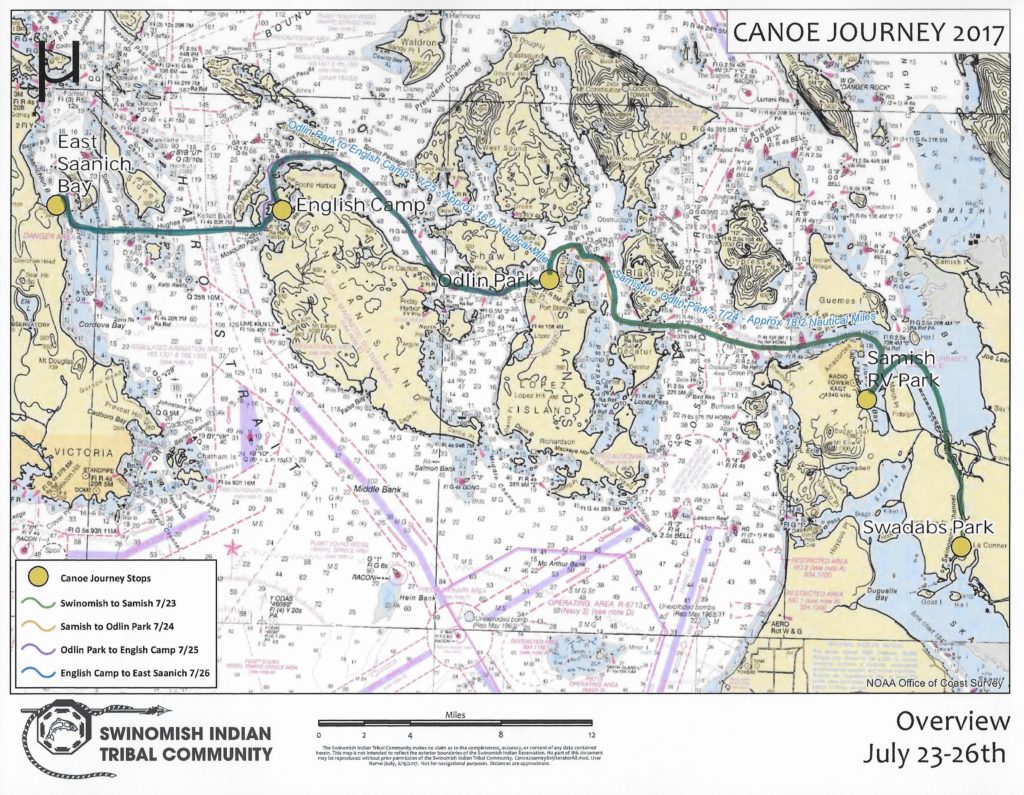 We hosted eight canoes from the tribes around the San Juan Islands and the Anacortes area. The families represented the Swinomish, Lummi, Squaxin Island, Skokomish, Stillaguamish, and Samish tribes. Beside the 80 paddlers, there were also 60 support vehicles of all varieties. Close to 250 people spent the night after the canoe arrival on Tuesday. It looked like tent city had suddenly popped up on the parade grounds. The park provided supper Tuesday night, fresh water, snacks, and – very important – toilets.
We hosted eight canoes from the tribes around the San Juan Islands and the Anacortes area. The families represented the Swinomish, Lummi, Squaxin Island, Skokomish, Stillaguamish, and Samish tribes. Beside the 80 paddlers, there were also 60 support vehicles of all varieties. Close to 250 people spent the night after the canoe arrival on Tuesday. It looked like tent city had suddenly popped up on the parade grounds. The park provided supper Tuesday night, fresh water, snacks, and – very important – toilets.
Tom and I did not get to see much of the Coast Salish Canoe Journey. We were on traffic duty. All the support vehicles had to go up and down a narrow 1/2 mile road through the forest. Tom was stationed at the top of the hill, on the road, and I was stationed at the bottom of the hill. We had to talk to each other on radios so no one going up or down met another vehicle going the opposite direction. I am happy to report we were successful in our task. It was dry and dusty work, but we were happy to do our part.
The next morning the canoes started out again shortly after dawn (around 6 a.m.). Most of the support vehicles drove out soon after. They had a ferry to catch. Unfortunately, the loss of the Tillamook ferry meant that not everyone was able to make it to Sidney on Wednesday. We had one canoe and a large group of support people, who had to stay an extra night before they could get on the ferry Thursday.
The Coast Salish Canoe Journey is continuing. Seeing all the canoes coming ashore at Campbell River would be amazing. Two tribes in the Campbell River area are hosting a week-long gathering (potlach) and celebration for everyone. I’m sure thousands of people will show up and it will be a wonderful gathering.

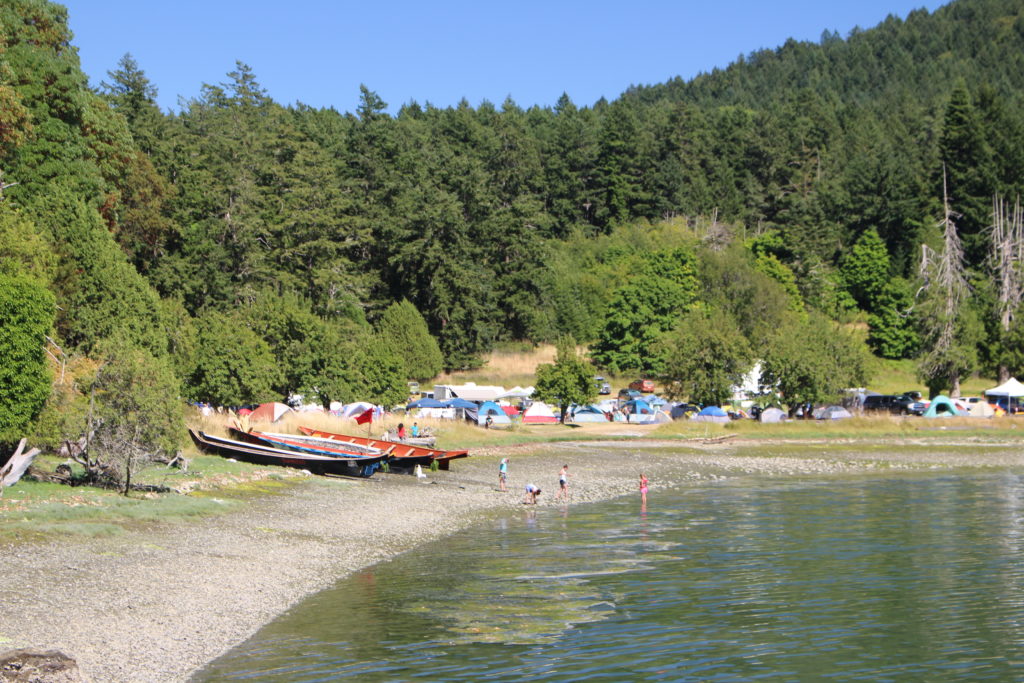
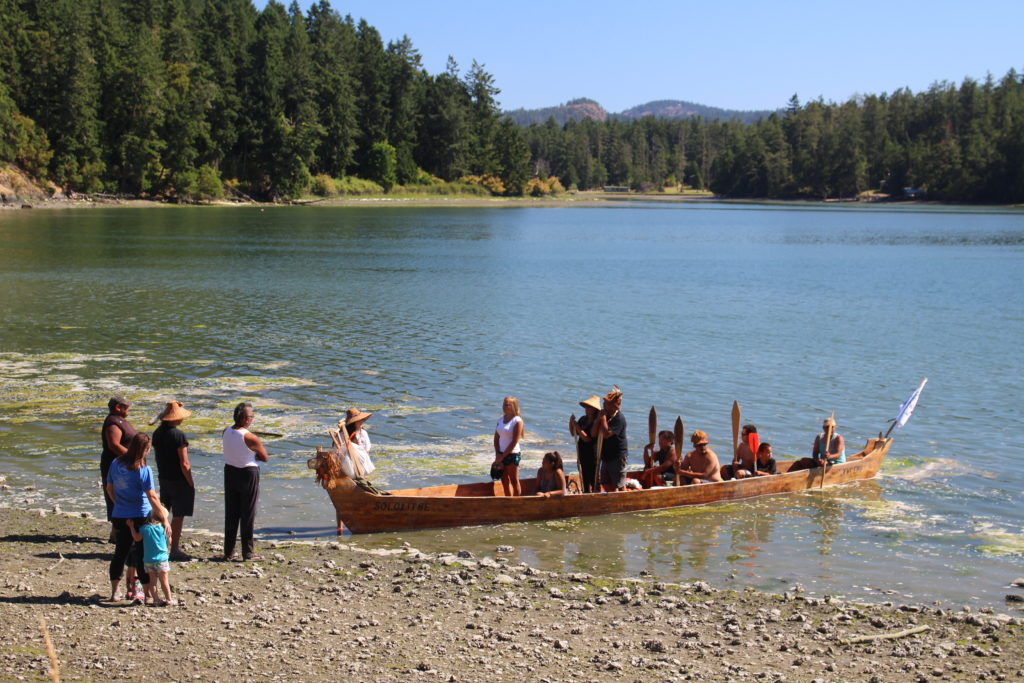
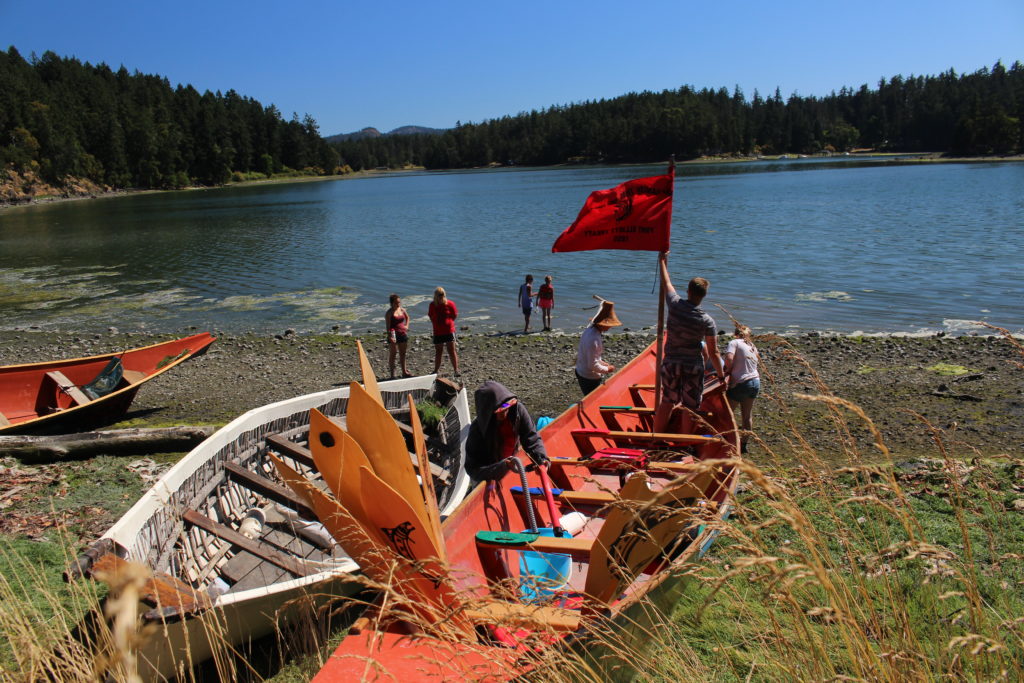
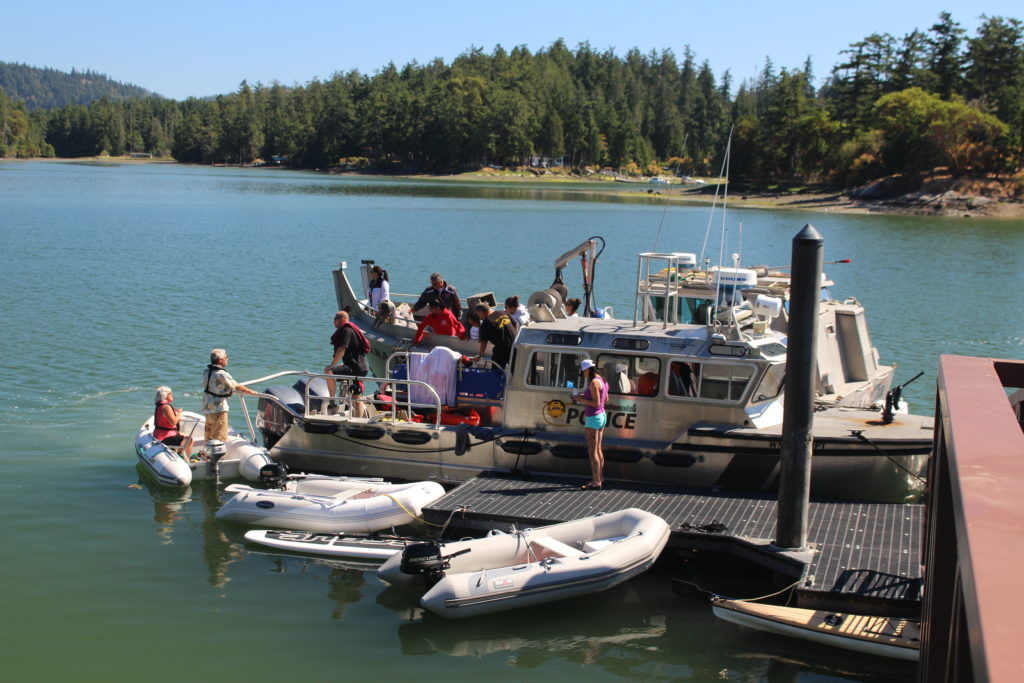

What an awesome tradition!
Such a wonderful celebration of their identity and keeping their traditions strong. You can see a video of the final landing at Campbell River here: https://www.youtube.com/watch?v=e3lOpSuW5rw